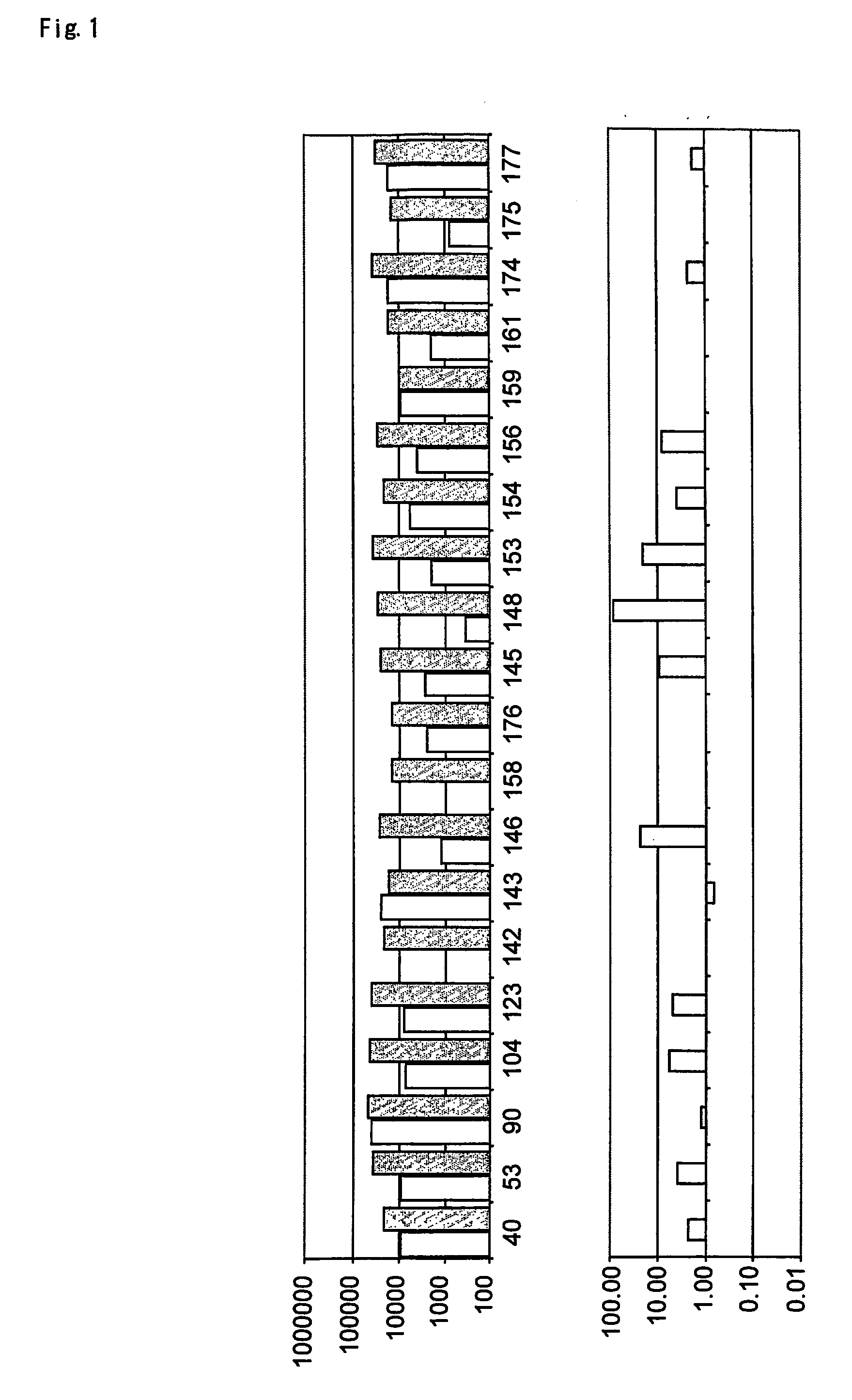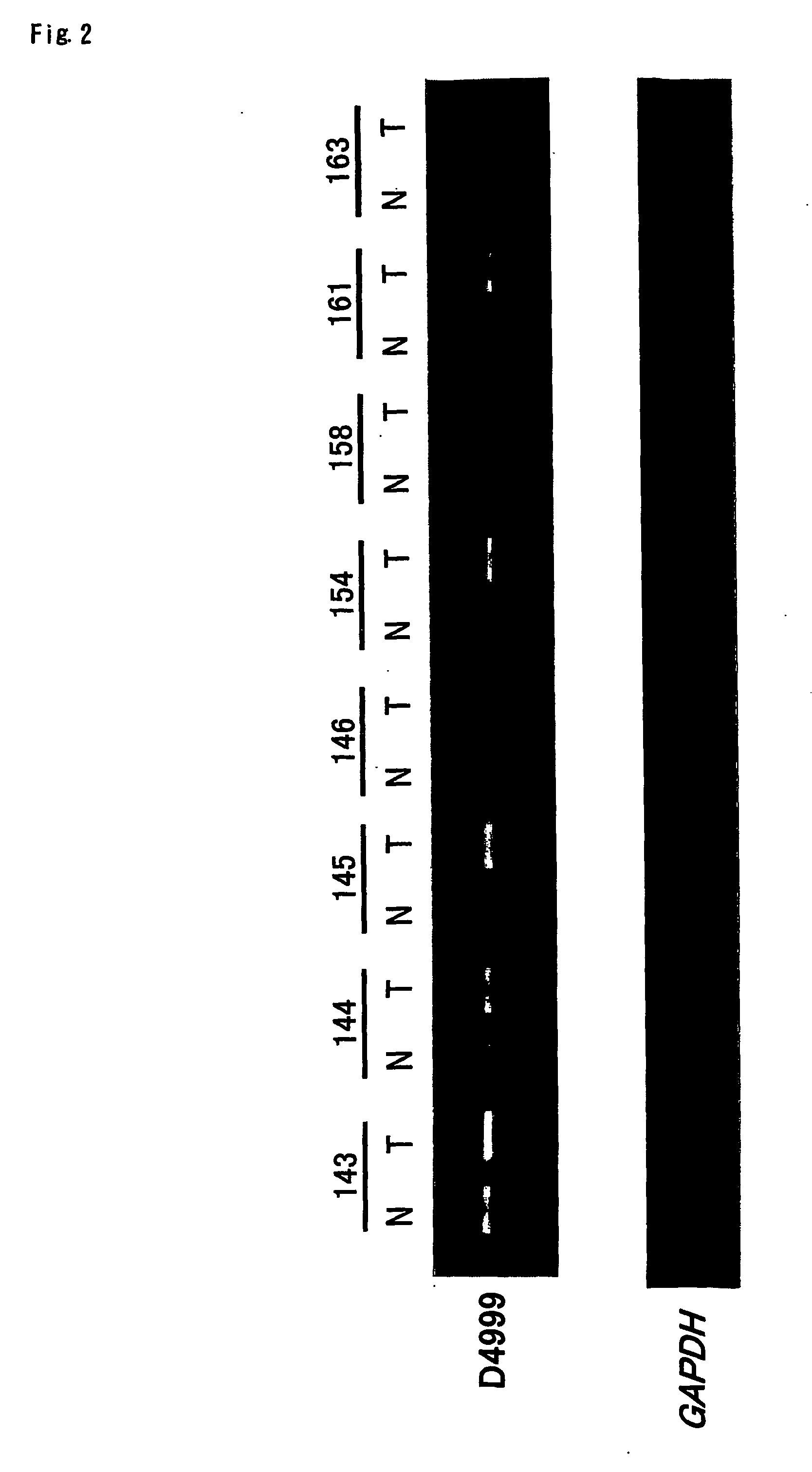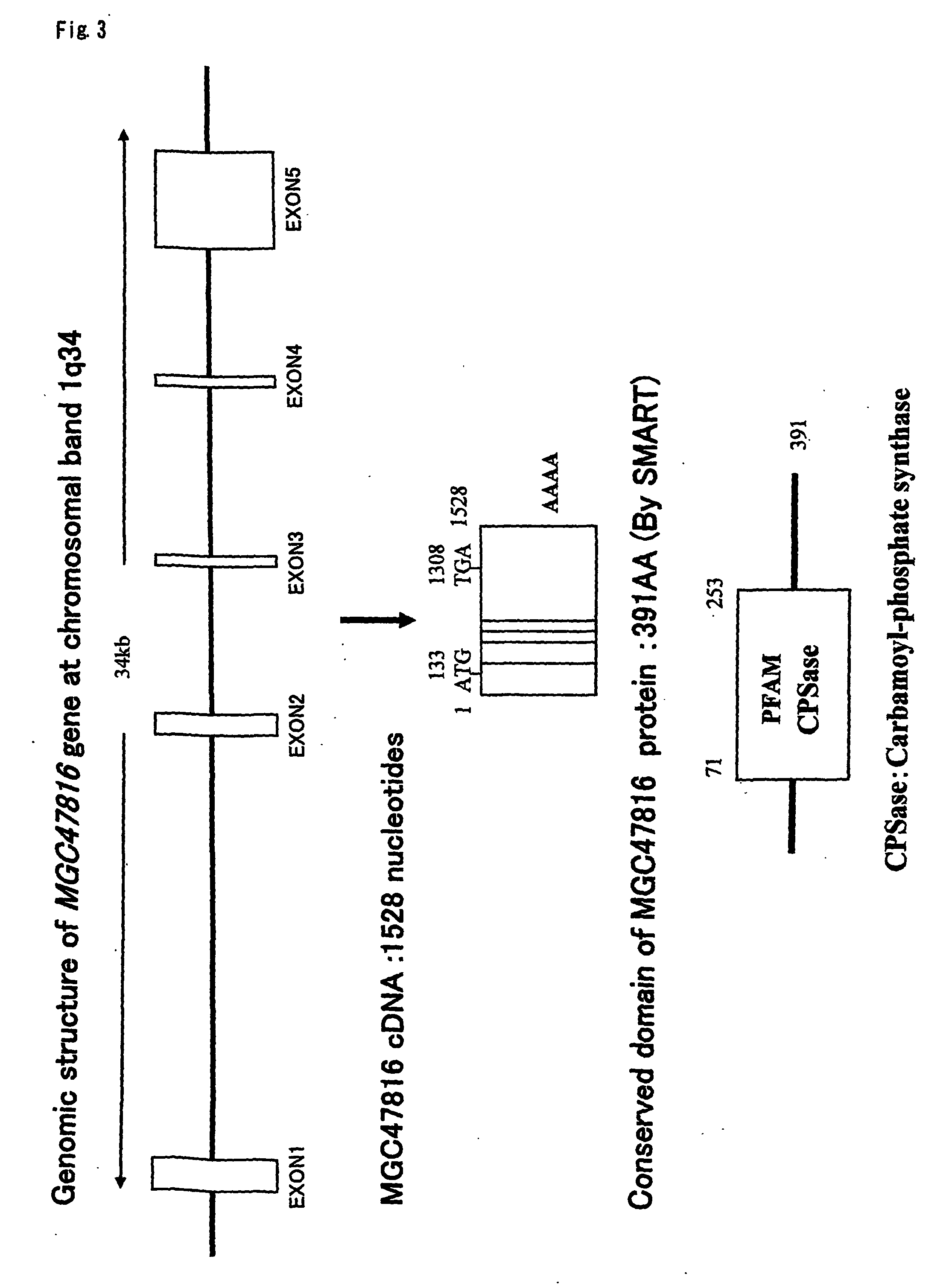Method for diagnosing hepatocellular carcinomas
a hepatocellular carcinoma and hepatocellular carcinoma technology, applied in the field of detecting and diagnosing hepatocellular carcinoma, can solve the problem of poor prognosis of patients with advanced cancer
- Summary
- Abstract
- Description
- Claims
- Application Information
AI Technical Summary
Benefits of technology
Problems solved by technology
Method used
Image
Examples
example 1
Materials and General Methods
Patients and Tissue Specimens
[0170] All hepatocellular carcinoma tissues and the corresponding non-cancerous tissues were obtained with informed consent from surgical specimens of patients who underwent surgery.
Genome-Wide cDNA Microarray
[0171] In this study, a genome-wide cDNA microarray with 23,040 genes was used. Total RNA extracted from the microdissected tissue was treated with DNase I, amplified with Ampliscribe T7 Transcription Kit (Epicentre Technologies), and subsequently labeled during reverse transcription with a Cy-dye (Amersham); RNA from non-cancerous tissue was labeled with Cy5 and RNA from tumor with Cy3. Hybridization, washing, and detection were carried out as described previously (Ono, K., et al. Cancer Res., 60: 5007-5011, (2000)), and fluorescence intensity of Cy5 and Cy3 for each target spot was generated by ArrayVision software (Amersham Pharmacia). After subtraction of background signal, the duplicate values were averaged fo...
example 2
Results
Identification of D4999 Whose expression is Frequently Up-Regulated in Human HCC
[0184] The expression profiles of 20 HCCs were compared with their corresponding non-cancerous liver tissues using cDNA microarray containing 23,040 genes. Among commonly up-regulated genes in HCCs, a gene with an in-house accession number of D4999, corresponding to an EST (MGC47816) in Hs.420244 of a UniGene cluster (http: / / www.ncbi.nlm.nih.gov / UniGene / ), was over-expressed in seven of eleven HCCs compared with the corresponding noncancerous liver tissues (FIG. 1). To clarify the results of the microarray, semi-quantitative RT-PCR we performed, which revealed that expression of D4999 was increased in seven of additional eight HCCs as compared with corresponding non-cancerous liver tissues (FIG. 2).
Identification, Expression, and Structure of MGC47816
[0185] Homology searches with the sequence of D4999 in public databases using BLAST program in National Center for Biotechnology Information (h...
example 6
Disucussion
[0192] cDNA microarray technologies have enabled the discovery of comprehensive profiles of gene expression in various human neoplasms. This approach discloses the complex nature of cancer cells, and enables a more profound understanding of carcinogenesis. In addition, it facilitates the identification of genes whose expression levels are deregulated in tumors, which should lead to more precise diagnosis of the tumors, and the development of novel therapeutic strategies.
[0193] Studies designed to reveal mechanisms of carcinogenesis have identified several molecular targets for anti-tumor agents. For example, inhibitors of farnesyltransferase (FTIs) were originally developed to inhibit the growth-signaling pathway related to Ras, whose activation depends upon posttranslational farnesylation, and have been effective in treating Ras-dependent tumors in animal models (Sun J. et al. Oncogene 16: 1467-73, (1998)). In humans, clinical trials using a combination of anti-cancer ...
PUM
| Property | Measurement | Unit |
|---|---|---|
| weight | aaaaa | aaaaa |
| volumes | aaaaa | aaaaa |
| pH | aaaaa | aaaaa |
Abstract
Description
Claims
Application Information
 Login to View More
Login to View More - R&D
- Intellectual Property
- Life Sciences
- Materials
- Tech Scout
- Unparalleled Data Quality
- Higher Quality Content
- 60% Fewer Hallucinations
Browse by: Latest US Patents, China's latest patents, Technical Efficacy Thesaurus, Application Domain, Technology Topic, Popular Technical Reports.
© 2025 PatSnap. All rights reserved.Legal|Privacy policy|Modern Slavery Act Transparency Statement|Sitemap|About US| Contact US: help@patsnap.com



